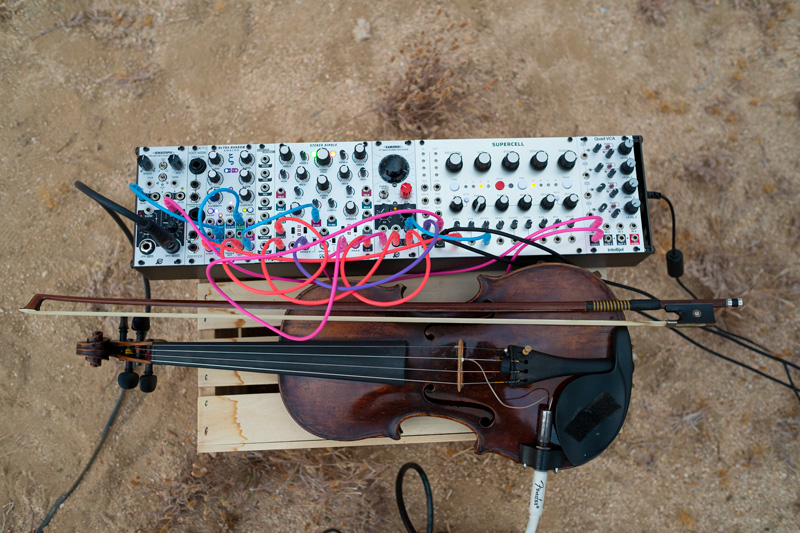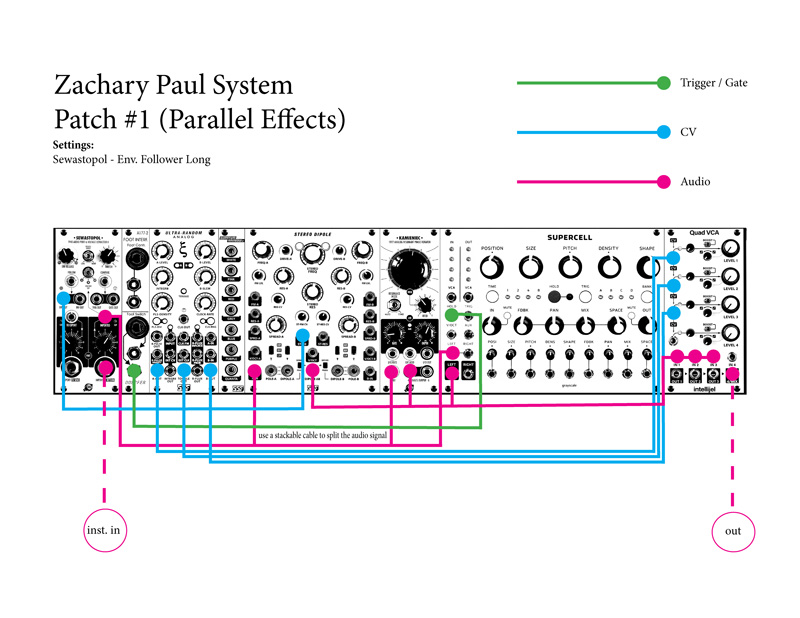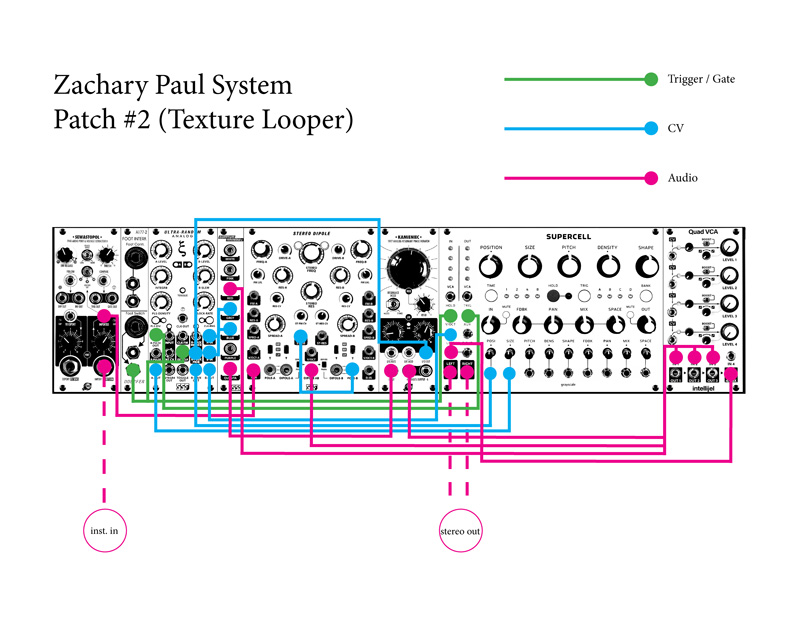Some of our favorite local LA artists have never used modular synthesizers before, and we wanted to do something about it. We’ve plotted a project that would open up the opportunity for the artists to try and design a custom Eurorack synthesizer, and experiment with integrating it into their workflow: and we call this project The Mojave Desert Modular Experiment. We have collaborated with each of the five artists individually to create the perfect machine for their needs. Artists had two weeks to explore the systems, a challenging task, given how deep and flexible modular synthesizers are as instruments. The results of their efforts were filmed and recorded in the magnificent landscape of the Mojave desert.
Zachary Paul is a Los Angeles-based violinist and composer. His solo performances are trance-inducing improvisational soundscapes filled with layers upon layers of microtonal clusters and emotive, moving melodies. All the sounds are generated through a symbiosis of the violin and a few effects pedals—typically a combination of a looper, delay, and reverb stompboxes. As Zach describes it himself: “I like keeping it pretty simple, because it forces me to use the violin in an interesting way."
We decided not to deviate too far away from this concept, and together with Zach assembled a small system dedicated to sound processing, albeit with much more flexible sonic options than the typical pedalboard provides.
System Breakdown

As Zach’s music is very textural, an expanded version of the legendary Mutable Instruments Clouds module— Grayscale Supercell was selected for its ability to easily turn any sound into layers of blissful lo-fi soundscapes. The Hold feature on the module is a perfect alternative to a looper pedal, as it can freeze several seconds of audio. In fact, this module alone can accomplish much of the similar tasks done by all three of Zach’s original pedals together. It can break up sounds into hundreds of tiny fragments, as well as pitch shift and harmonize. Moreover, the module features lush reverb.
With so many techniques covered by the Supercell, Zach was keen on the idea of expanding his original set of tools. The first choice fell on the Stereo Dipole filter from SSF. It can be applied moderately to emphasize or soften certain parts of an instrument's tone, i.e. smoothing out the high end or beefing up the lows; but alternatively, it can be used for extreme effects, like distortion, ring modulation, and more. Lastly, Stereo Dipole is a great sound generator all on its own, and could be employed as a drony/noisy accompanist to the voice of Zach’s violin.

Additionally, XAOC Devices Kamieniec was chosen for the uncanny phase-shifting effects it produces. On the most basic level, the module can be used as a traditional phaser pedal, familiar to the majority of guitar players, however, its sonic potential goes beyond the ordinary. Just processing a few violin notes through it yielded sonic textures not easily achievable otherwise. Unlike many phaser pedals, one may find that Kamieniec adds significantly more character to the sounds. At the most extreme settings, the module can produce intense sounds, resembling screeching metal.
No modular synthesizer is complete without a modulation source. Ultra Random Analog by SSF is one of the most advanced multi-purpose modules out there. URA is a source of randomization and various kinds of modulation in the system. It is the module that transforms the pedal-like set-and-forget performance approach to a much more interactive endeavor. The module can be used to clock and trigger events, as well as change parameters of other modules over time. Additionally, Ultra Random Analog can produce audible noise, square wave oscillator sounds, as well as process external audio in a distortion-like manner. Furthermore, we’ve augmented URA with Quantum Rainbow for extended noise colors.

By itself, the signal of a violin (as well as most other electro-acoustic instruments) is much quieter than what is expected by a modular synthesizer, but luckily this is easy to resolve. We chose XAOC Devices Sewastopol II to act as an external input to the modular system. In addition to this basic function, Sewastopol also includes an envelope follower circuit: a way to control the effects by detecting the loudness of the violin signal itself, immediately enhancing the system's interactive nature.
With all of the complex processors in place, now we needed something for mixing and managing individual volume levels of the signals. Thus, Intellijel’s Quad-VCA was added as the main hub for dynamic control. The module can be used to combine all the layers into a single output or provide four independent out channels.
Although modular synthesizer may seem daunting at first sight, from a certain angle they can be viewed as an extended and more interactive pedalboard. One may simply experiment with twisting knobs, changing signal routing, creating feedback networks, and listening for the results these actions are causing. Some interactions with the instrument will be effective, immediately producing drastic effects, while others won’t do much, but that is the nature of a learning process. Be assured, patience and curiosity will be rewarded.









